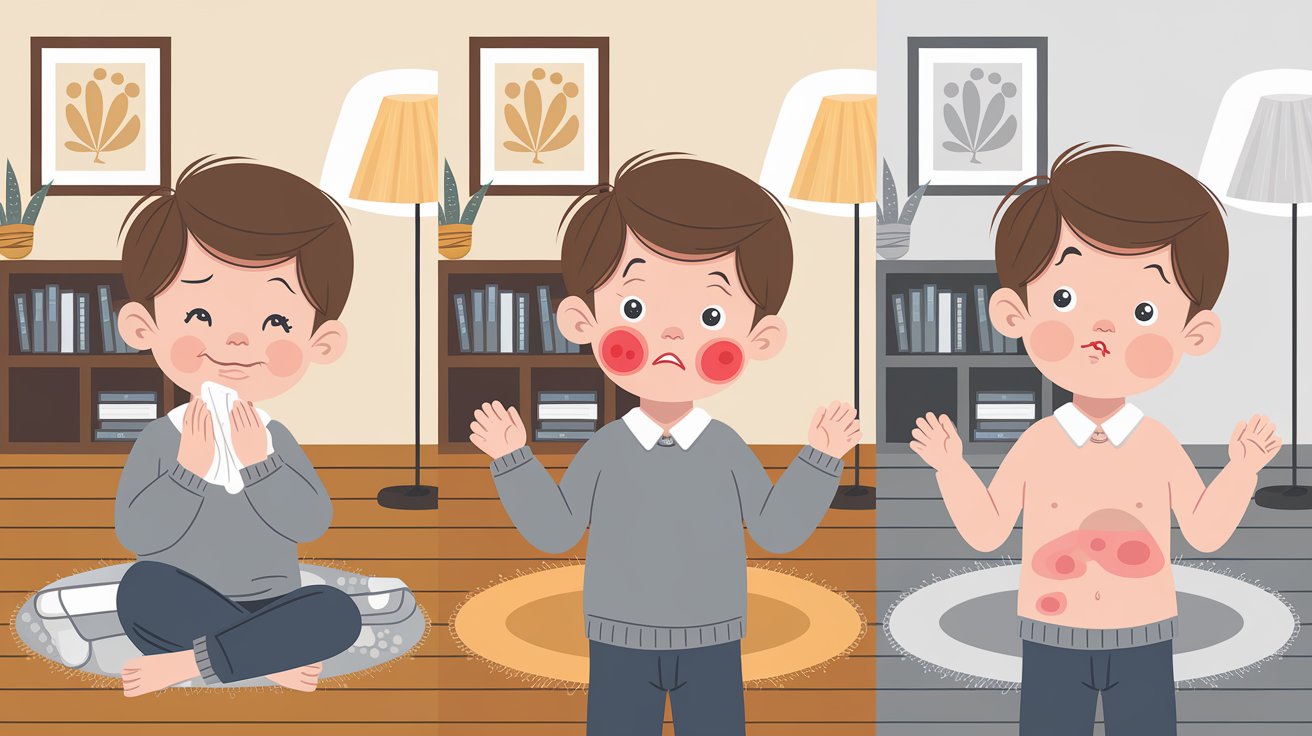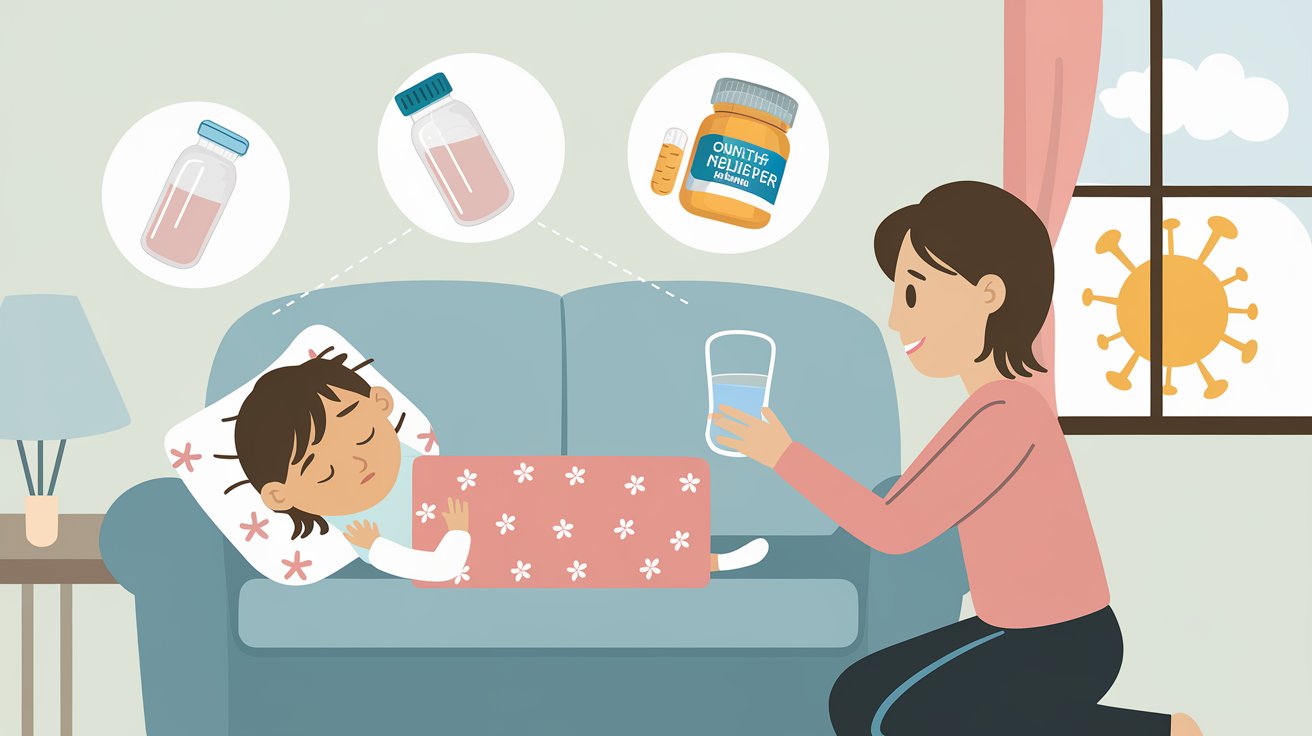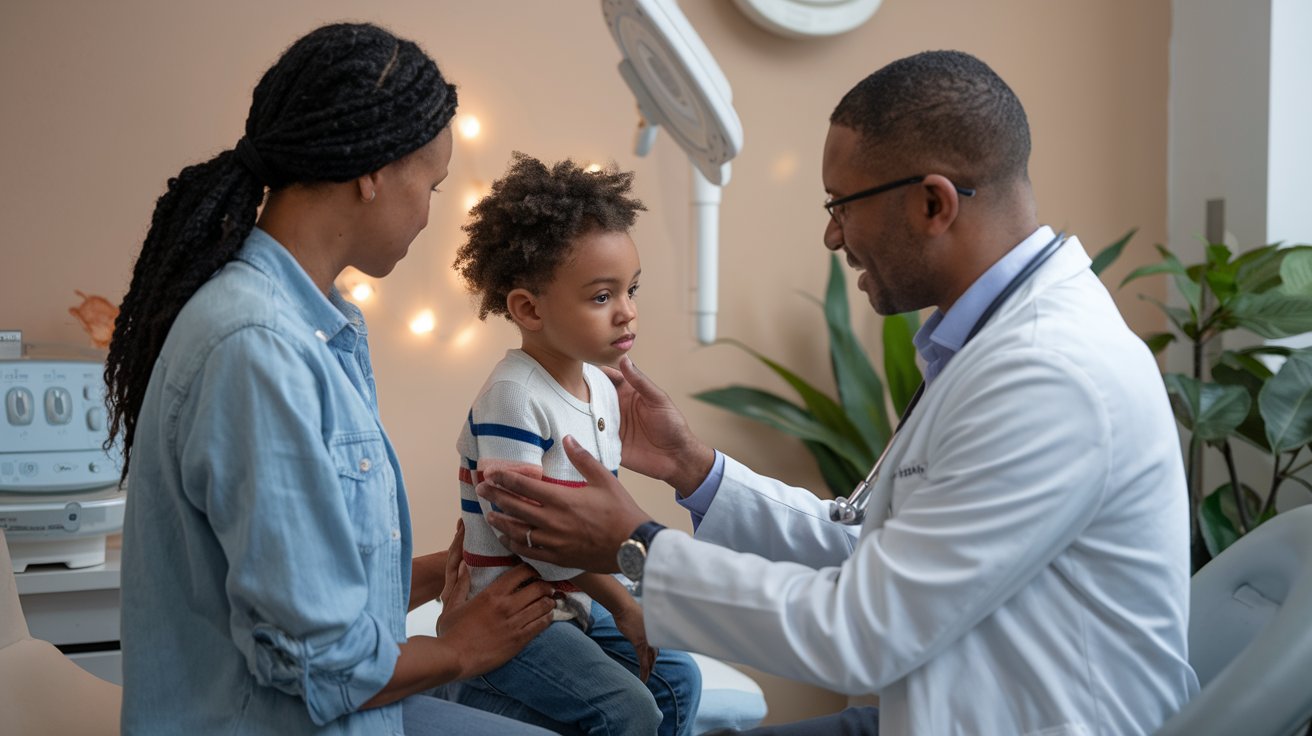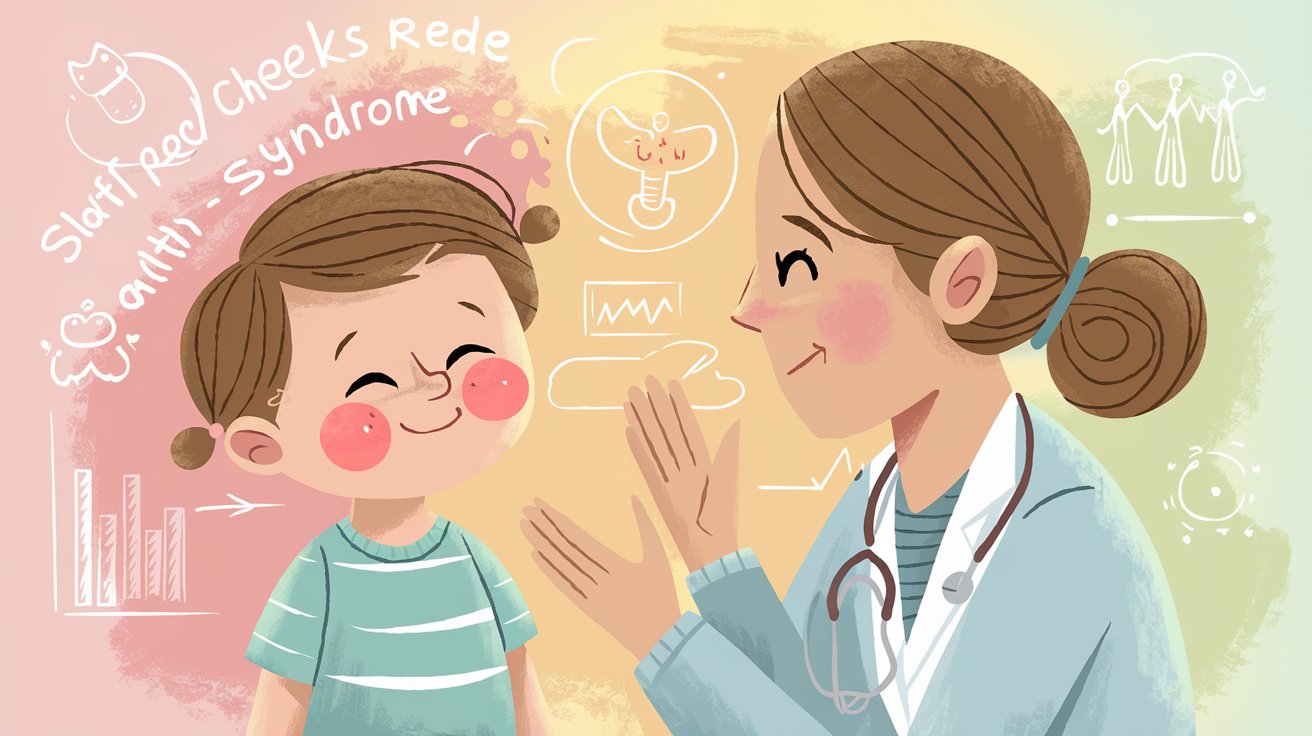Slapped cheek syndrome, also known as fifth disease or erythema infectiosum, is a common viral infection primarily affecting children but can also occur in adults. It is contracted from the parvovirus B19 which favours the development of a red rash on the cheeks hence the slapped-cheek disease. While the disease is not severe most of the time, slapped cheek syndrome is a potential worry to pregnant women and the immunocompromised group of people. In this detailed guide, we’ll also discuss the causes and possible signs of slapped cheek syndrome, the treatment and management of the disease, and how to prevent it.
What exactly is slapped cheek syndrome?
Slapped cheek syndrome is a term incurred from a bright red rash, which appears right on the cheeks as if from a slap. This infection is rarely serious and is often a limited infection that runs its course without the need for treatment. Parvovirus B19, which causes the disease, passes through the air in droplets containing the virus when an infected person talks, coughs, or sneezes.
They are typical in children between the ages of 5 to 15 but, those in the adult age bracket are also vulnerable to the virus. Even though in most cases the situation is cured by itself, it may cause further health problems in people with anaemia and pregnant females
Signs of Slapped Cheek Syndrome

The signs of slap cheek syndrome occur in cycles within a matter of days. Here’s a breakdown of the common symptoms:
1. Early Symptoms (Stage 1):
Fever: Weak or low-grade fever is one of the early indications of the flu, especially in children.
Headache and fatigue: Persons may generally have an unwell or ill-looking approach towards life.
Cold-like symptoms: Sneezing, a runny nose, a sore throat and muscle pain.
Such signs are similar to cold sickness and therefore cause diagnostic complications at this age.
2. Rash Appearance (Stage 2):
Cheek Rash: Inflammation or redness, on both cheeks forms a red line as if slapped. This rash can be quite obvious.
Body Rash: There is an eruption of a lacy, pink maculopapular rash, which starts after the facial rash and occurs mainly at the limbs and the trunk.
A special feature of the rash is that it is seldom attended by itching; in some instances, there may be itching of a mild degree only. The rash may be periodic over a few weeks and worsens due to heat, exercise or exposure to sunlight.
3. Joint Pain and Swelling (Stage 3):
Joint Pain: In adults especially women, slapped cheek syndrome can present itself as arthritis with complaints of pains in joints such as hands, wrists, knees and Ankles.
Arthritis-like symptoms: These symptoms may in some cases last for several weeks or even months.
Aetiology and Modes of Spread of Slapped Cheek Syndrome
Causes and Transmission of Slapped Cheek Syndrome

There is more about parvovirus B19 which causes slapped cheek syndrome, and is highly infectious, transmitted through aerosol from the coughs and sneezes of patients. The transmission may also happen by contact with the subjects’ respiratory secretions or objects such as cups and tissues.
Symptoms include fever, general weakness, neck stiffness, painful swallowing, loss of appetite and skin rash, individuals are most infectious at the onset of the disease in this phase, and rarely infectious by the time the rash has developed. As soon as a rash appears on the skin, one cannot easily pass the virus from one person to another any longer.
Despite slapped cheek syndrome commonly being attributed to kids, it’s still possible for an adult to contract the virus. In most cases, after you have had the virus you cannot get the virus repeatedly which means you are immune to it.
Who Is at Risk?
Children: Children ranging from ages five to fifteen years, although they can occur at any age.
Pregnant Women: While generally not dangerous, slapped cheek syndrome can in pregnant women be complicated by fetal anaemia if the disease occurs before the twentieth week of pregnancy or may in some cases end fatally in a miscarriage.
People with Weakened Immune Systems: Patients on chemotherapy, with HIV or any other immune-compromised condition, are vulnerable to developing severe outcomes.
Diagnosis
Diagnosis of slapped cheek syndrome is mainly clinical and the characteristic rash of the disease is usually enough to identify the condition. This is so especially if there is doubt, or if the patient is high risk, such as pregnant women or those with a compromised immune system, an antibody test to parvovirus B19 may be ordered.
Treatment of Slapped Cheek Syndrome

At the moment there is no antiviral treatment for slapped cheek syndrome as it is a viral infection. Normally the infection is self-limiting and clears up within one to three weeks. However, the following treatments can help manage symptoms:
Rest: Persuade children or adults to take a break to enable their bodies am Recover.
Fluids: Take enough water and other fluids to support the body’s ability to fight the virus.
Pain Relievers: Medications that are available without prescription include over-the-counter drugs such as paracetamol, also known as acetaminophen (Tylenol) or oral non-steroidal anti-inflammatory drugs: NSAIDs such as ibuprofen (Advil). Do not give aspirin to children because it may cause Reye’s syndrome.
Moisturizers: If there is any itchiness produced due to the rash, apply creams that are safe for use on the skin.
Patients with comorbid diseases or compromised immunity may need immunoglobulin therapy or blood transfusion to treat severe anaemia.
How to Avoid Slapped Cheek Syndrome

Since slapped cheek syndrome spreads through respiratory droplets, the best way to prevent infection is by practising good hygiene:
Wash Hands: When in public or around an infected person wash your hands with soap and water at least once every day.
Cover Mouth and Nose: Parents and teachers should ensure that children wear handkerchiefs or scarves around their lips while coughing or sneezing.
Avoid Sharing Personal Items: Avoid contact with others by not using the same food, drinks or cutlery.
Stay Home: Children with symptoms of the illness should not attend school, especially at the time when the disease is most likely to spread.
Personally, I really have no awareness of a slapped cheek syndrome vaccine and as good as hygiene can cut down on the spread of the syndrome, it is not preventable.
When to See a Doctor

In most instances, slapped cheek syndrome is not serious and fades away without any treatment. However, seek medical attention if:
The rash is not followed by any of these signs: a high fever and the rash lasts more than a few days.
Mainly, when there is a likelihood of pregnancy or if a woman has been pregnant and has contracted the virus.
This is often the case when the infected person has an underlying condition that worsens the infection — be it a poor immune system or anaemia.
Conclusion
This viral disease is characterized by a rash in a slapped cheek fashion but is extremely mild in most of the affected patients and very infectious, particularly in childhood. Those issues can elaborate on some of the risks associated with the cases of eczema what signs reveal that individuals should seek treatment and how a pregnant woman can deal with the condition that can affect herself and her unborn child. Knowing how to prevent the occurrence of slapped cheek syndrome and having proper information on how to care for a child affected by it can alleviate it into tolerable home treatment.

